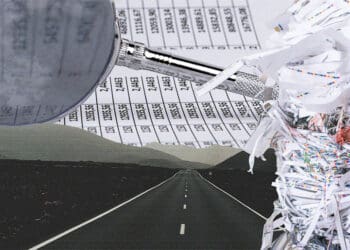with contributing authors Jenni Hill and Lara Gotti
In recent times, regulators have been flexing their muscles by seeking to prosecute those who come before them with the use of information obtained under compulsion. Regulators in Australia have significant powers to compel answers from witnesses such that the cross-examination of those witnesses has been compared to “pulling wings off a butterfly.”[1]
However, over the last two years, the balance is being redressed by the High Court of Australia as it considers a number of cases challenging the use in criminal trials of evidence compulsorily obtained by regulators. The Court has found that the use of such compulsorily acquired information in subsequent trials is inconsistent with the accusatorial nature of criminal prosecutions in Australia, abrogates the individual’s “right to silence” and is inconsistent with the right to a fair trial.
The Australian Approach – a summary of the position to date
The primary issues that have been considered by the High Court to date are 1) the circumstances in which a person can be required to answer questions that are directly related to criminal charges they are then facing and 2) if the person has already been questioned, what use (if any) can be made of the transcripts of their answers.
Whether a person can be compulsorily examined while facing criminal charges appears to depend on whether there is any limitation placed on how the answers can be used, who conducts the examination and whether the examination will prejudice the accused’s right to a fair trial. Where the legislation specifically limits the use of any answers and the judiciary is involved in the examination, as opposed to a regulator alone, the High Court has allowed an examination to proceed.[2] However, when an accused was sought to be examined by the Australian Crime Commission on matters directly related to the charges he was facing, the High Court ruled that there was no entitlement to compulsorily examine the accused.[3]
Where the compulsory examination has already occurred, the primary question is what use, if any, prosecutors are entitled to make of transcripts of earlier compulsory examinations in subsequent criminal proceedings.[4] Previously, the practice of regulators was to provide the transcript to the prosecution team so that they could determine what possible defenses the accused might raise in the subsequent criminal trial. The High Court has found that provision of the transcript to the prosecutors fundamentally affects the right of the accused to a fair trial. Where this has occurred, convictions have been overturned and a retrial ordered.[5]
It appears that where an accused has been examined by a regulator under compulsion, any subsequent prosecution must involve a team that has not read the transcript of such examinations. Exclusion of certain witnesses may also be required. However, the High Court has made it clear that it will consider each matter on a case by case, and an Act by Act, basis. That is, the Court will look at the particular regulatory body and the legislation and they have emphasized that a broad brush approach is not appropriate.
Questions still to be answered
To date, the High Court has commented on provisions of the Australian Crime Commission Act, the NSW Crime Commission Act and the Proceeds of Crime Act. However, their case by case, Act by Act approach leaves open how they will approach the compulsory examination provisions in other Acts.[6]
It is also unclear how the prosecutorial bodies will deal with these decisions. While the High Court has been clear that dissemination of a transcript to prosecutors will be a breach of the accused’s right to a fair trial, how far this right will extend is still unknown.
The Federal Government is attempting to limit the High Court’s decisions by introducing a bill which aims to cement the ability of certain bodies to examine a suspect under compulsion, regardless of whether they have also been charged with a crime and to allow prosecutors the use of information obtained during those examinations.[7] While the legislation includes a number of safeguards to protect an accused’s rights,[8] the adequacy of those safeguards remains to be seen.
What this means for you?
While the right to silence and the right not to incriminate oneself are generally recognized international standards[9], there are significant differences in how those rights are recognized in various jurisdictions. Given the increasing cooperation of regulators across the globe, these differences in approach must be taken into account by prosecutors and companies alike.
Many jurisdictions are introducing legislation to strengthen investigatory bodies. Whilst it is a criminal offence to obstruct or hamper an investigation, there are safeguards that can be put in place to ensure that the regulator is acting within its power and that answers provided to the regulator are excluded from a subsequent criminal trial.
If you receive a notice from any investigatory body, consult a lawyer to discuss the terms of the notice, your obligations and your rights. While you ultimately may be required to provide the information, you should do so only in a manner and by a means that best protects your rights, such as under notice or compulsion.
[1] Reported comments by Megan Latham, NSW Independent Commissioner against Corruption, at a NSW Bar Association seminar for young lawyers.
[2] Lee v NSW Crime Commission [2013] HCA 39, 9 October 2013 (Lee No 1) where the High Court allowed an examination to proceed. However, note the contrasting approach in Australian Federal Police v Zhao [2015] HCA 5 where the High Court did not allow the examination on the basis that it would require him to disclose his defence and prejudice his right to a fair trial.
[3] X7v ACC [2013] HCA 29, 26 June 2013.
[4] Lee v The Queen [2014] HCA 20 (Lee No 2)
[5] See also the decisions of the NSW Court of Criminal Appeal in R v Seller; R v Mccarthy [2013] NSW CCA 42 and R v Seller [2015] NSWCCA 76. Leave to appeal from these decisions have been refused on 2 occasions by the High Court of Australia.
[6] In particular, the Competition and Consumer Act 2010, the Australian Securities and Investments Commission Act 2001, the Income Tax Assessment Act 1936 and the Tax Administration Act 1953, as well as the various state Crime and Corruption Commission Acts.
[7] Law Enforcement Legislation Amendment (Powers) Bill 2015. The bill has passed both Houses of Parliament and been assented to. It is yet to be proclaimed.
[8] Safeguards include court orders for the disclosure of material (s25) and immunity against the use of information in any subsequent prosecution (direct use immunity) provided privilege is claimed prior to disclosure (s 30).
[9] In the US, the right to silence is enshrined in the Fifth Amendment. However, where the legislation or government grants immunity against prosecution or the use of the compulsorily obtained testimony or evidence in any subsequent proceedings, a person can be compelled to give evidence (Kastigar v United States 406 US 441). For the UK and Europe, see the decision of Saunders v The United Kingdom ECHR 17 Dec 1996 which found the use of compulsorily obtained evidence was a breach of article 6 of the European Convention on Human Rights.



 Wendy L. Wysong is a partner at
Wendy L. Wysong is a partner at 










